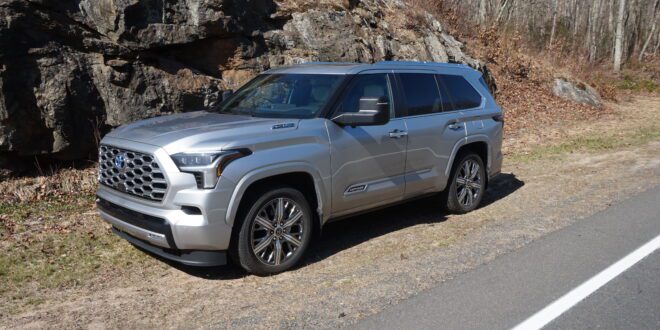EAST HADDAM, CT – It’s clear that automakers are running out of provocative new model names. Thus the Toyota Sequoia Capstone.
In case you don’t know, a “capstone” is a project that aims to demonstrate a student’s mastery of a particular subject or field of study. Or it could just be a finishing rock on the top of a wall.
Building a beefy utility vehicle off a full-size pickup truck platform, however, is nothing new. Chevy’s been doing it for years with the Tahoe as has Ford with the Expedition.

With the elimination of the Land Cruiser, the Sequoia Capstone is now Toyota’s flagship SUV four-wheeler. It rides on the latest Toyota Tundra frame and is likewise motivated by a 3.4-liter, twin turbo V6 engine with a 10-speed automatic transmission.
The example that I drove recently was a hybrid, which is referred to as the “i-Force Max.” The tough yet tasteful Toyota generates 437 horsepower and 583 lb.-ft. torque, which is up 56 and 182, respectively, from what had previously been a V8. As a result, towing capacity has increased by 2,000 lbs. to 9,280 with rear-wheel drive (8,980 lbs. w/4WD).
Yes, it’s got plenty of grunt.
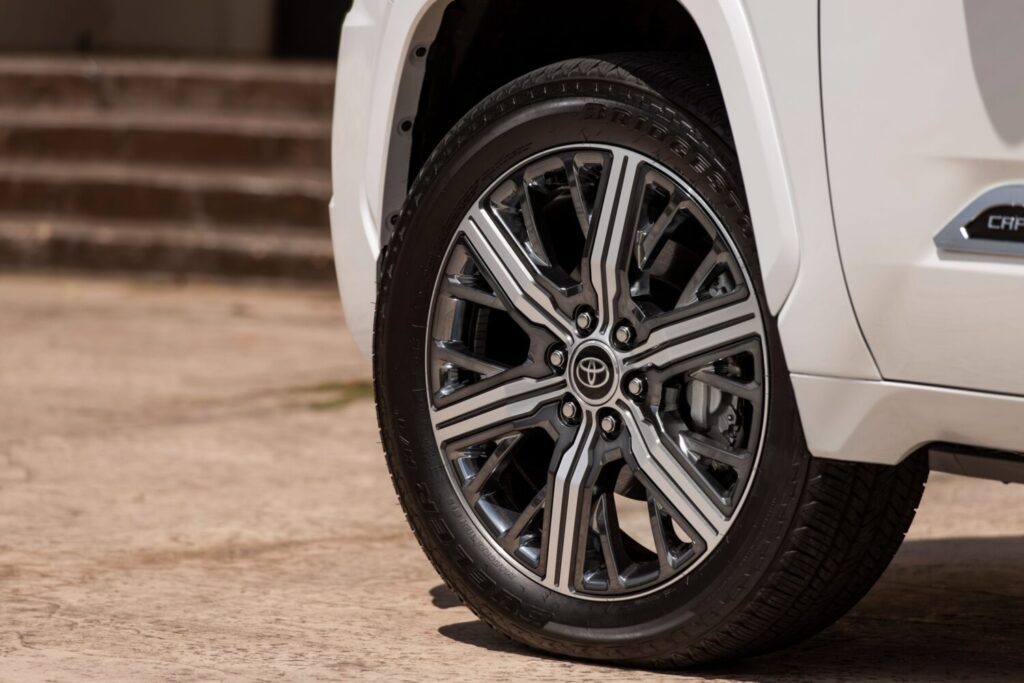
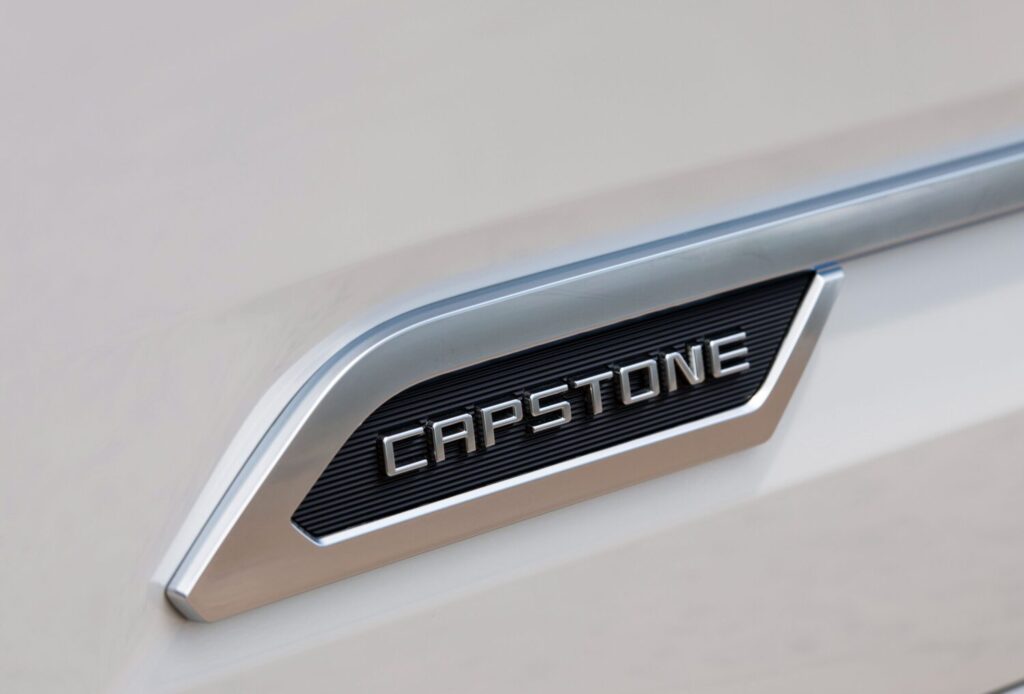
—
Part-time four-wheel drive with an electronically controlled transfer case also includes a limited slip differential. There’s also Drive Mode Select, with tow and haul modes. And like other modern, full-size offerings, it’s more agile than you might imagine.
The Capstone specification is the most luxurious package that Toyota offers. With exclusive chrome accents, grille and 22-inch dark chrome/machine finished alloy wheels, which is a first for Sequoia.
The Heads-Up Display (HUD) is in color. Power running boards are standard, as is 10-way power, semi-aniline, perforated leather seat trim in an exclusive black and white color combination. Which leads to the question: White in a rugged off-roader?

The cabin is further trimmed in Dark American Walnut. It includes LED mood lighting, along with sound deadening Acoustic Glass. Typical of Toyota, there’s an abundance of old school switches and buttons, so while it’s certainly nice and functional on the inside, it doesn’t convey anything like Lexus distinction. Heating and ventilation is controllable in three-zones.
Instrumentation and interior displays are expansive as its external footprint. There’s a 14-inch Toyota Audio Multimedia screen, a 12.3-inch Digital Display and even the previously referenced HUD is 10-inches. Meanwhile, the JBL subwoofer sound system includes 14 speakers.
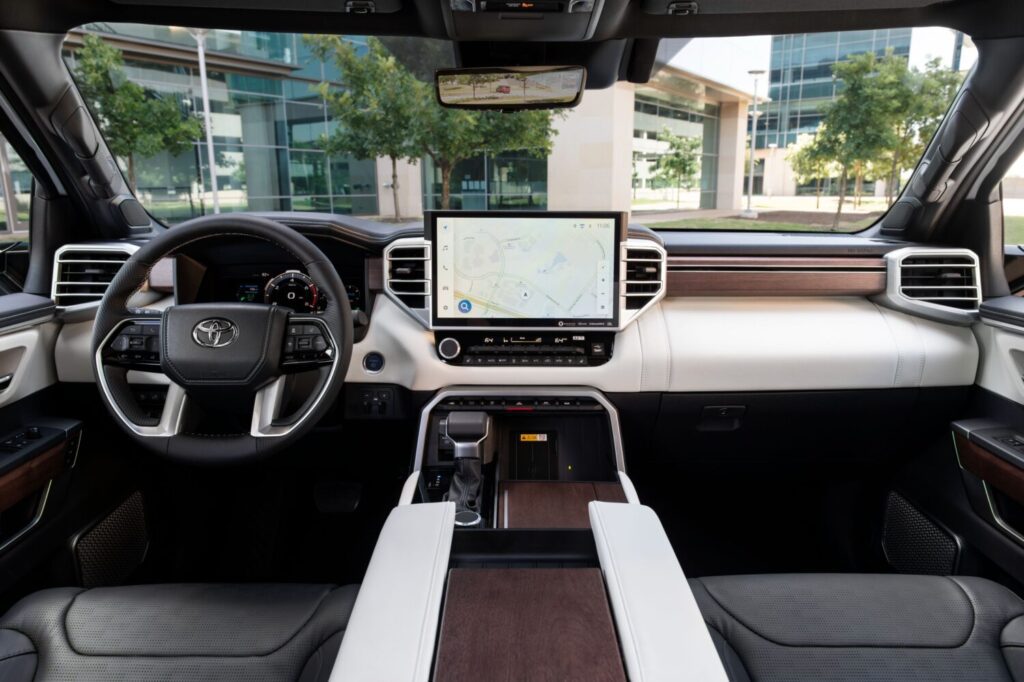
The Sequoia’s styling is noticeably dramatic and engaging, particularly in the striking Celestial Silver Metallic livery that sets its pronounced side surface sculpture apart. The model stands tall and was universally admired wherever it went. It will happily welcome as many as eight passengers via three-row seating. To help keep tabs on its prominent presence, massive Power Tow Side Mirrors are available for an additional $290.
Occupant well-being is also enhanced by Toyota Sense 2.5, which includes a Pre-Collision System with Pedestrian Detection. There’s also Full-Speed Range Dynamic Cruise Control, Lane Departure Alert with Steering Assist (which can fortunately be turned off on narrow, twisty roads), Lane Tracing Assist, Automatic High Beams and Road Sign Assist.
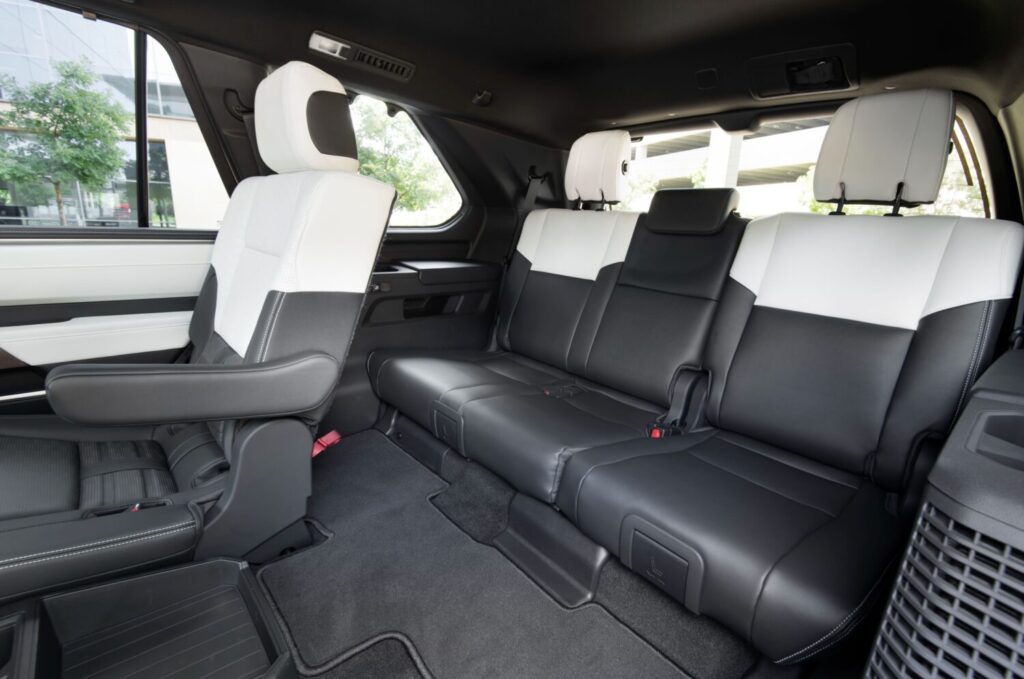
The Sequoia is also Connected Services Capable, with 4G network availability. While wireless Apple CarPlay and Android Auto Compatibility is de rigueur.
Surprisingly, Toyota refers to the Sequoia as an “off-road beast” that’s “hungry for adventure”, which I certainly wouldn’t consider the most flattering factory endorsement. Despite all its upscale pretensions, you still know you’re driving a pickup-derived truck from a chassis point of view as you get jostled about a bit.
The good news is that rear Air Suspension with Adaptive/Variable Control is optionally available ($1,045) to help reduce the chop. The bad news is that the Sequoia still rides on a solid, rough and tumble live-rear axle, though it is suspended with a multi-link arrangement instead of leaf springs.

The 4-wheel-drive Capstone delivers an average 20 mpg and weighs 6,185 lbs., with its Hybrid powertrain. Pricing starts at $81,265, though there are lower-spec Sequoia alternatives from $61,275.
So, unless you ambitiously and routinely tow out to the far reaches of the hinterlands, the three-row Grand Highlander crossover (if not a Sienna minivan) could perhaps be a better Toyota curriculum for 8-passenger coed accommodation than capping off with a burly Sequoia sport utility.
(Photos unless otherwise noted are courtesy of Toyota.)
TO READ OTHER REVIEWS BY STEVE ROSSI – CLICK HERE.
 RIDE-CT – Classic Cars Celebrating Classic Cars in Connecticut
RIDE-CT – Classic Cars Celebrating Classic Cars in Connecticut

